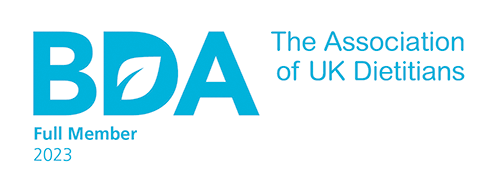Having gotten used to be told we’re eating too much of everything, we’re now being told we’re NOT EATING ENOUGH FIBRE!
Earlier this month (January 2019), the Lancet published a study that concluded that:
“People who eat higher levels of dietary fibre and wholegrains have lower rates of non-communicable disease”
(Translate as reduced risk of heart disease, stroke, type 2 diabetes, colorectal cancer)
How much fibre do I need?
30g a day. Brace yourself for a telling off – only 9% of UK adults get the recommended amount.
So 91% of us DON’T. Tut-tut.
I’m in. What should I eat?
You may have heard this health story on the news last week. The coverage I heard led with the advice to eat more wholegrain breads and cereals.
NOOOOO! It is highly unlikely that there is any reason why you would need to INCREASE your bread and cereal intake. Substitute the white breads and cereals you currently eat for wholegrain varieties, but do not increase intake.
Know your food labels..
High fibre is defined as greater than or equal to 6g of fibre in 100g of product. The table below shows a range of high fibre foods. Tuck in.
| g fibre / 100g | |
|---|---|
| Chia seeds | 34.4 |
| Flaxseeds | 27.3 |
| Pumpkin Seeds | 18.4 |
| Coconut | 16.3 |
| Sesame seeds | 14 |
| Almonds (with skins) | 12.5 |
| High fibre cereal (average) | 11 |
| Pine nuts | 10.7 |
| Pistachios | 10.6 |
| Hazelnuts | 9.7 |
| Pecans | 9.6 |
| Sunflower seeds | 8.6 |
| Peanuts (with skins) | 8.4 |
| Oats | 8.3 |
| Kidney beans | 7.8 |
| Brazil nuts | 7.5 |
| Wholemeal bread (average) | 6.8 |
| Avocado | 6.7 |
| Chickpeas | 6.1 |
See? Not just bread!
Obviously, portion size matters
We don’t eat food in 100g portions. So to give this some perspective:
- The average slice of high fibre bread contains no more than 3g of fibre per slice.
- 15g (1 tablespoon) of chia seeds will get you approximately 6g of fibre.
- Half a tin of chickpeas gets you 7g of fibre.
So without getting bogged down with mathematics , you can see that fibre can be increased more efficiently with foods that are higher in fibre than wholemeal / wholegrain bread. Not to mention increasing variety in your diet, and therefore nutrients…
Don’t forget about fruit and vegetables…
While most fruit and vegetables may have less than 6g of fibre per 100g, quantity matters. Anyone heard the “5 portions of fruit and vegetables a day” message? This could clock up around 15-20g of fibre a day.
However…
The latest Health Survey in NI reports a reduction in fruit and vegetable intake. The “5-a-day” message is well rehearsed, but the number of people who manage to include 5 portions of fruit and vegetables a day has gone from 43% in 2016/2017, to 38% in 2017/2018. Oh dear. Tut-tut, again.
So plenty of room for improvement, but not for everyone…
Not everyone will be able to tolerate 30g of fibre a day. This is intended as general information only. Get individual advice if you have any doubts about what is right for you.


